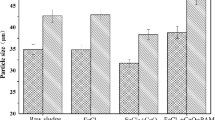Abstract
Urban sewage sludge treatment has become a severe problem due to its large quantities and enrichment with heavy metals, refractory organic contaminants and pathogenic bacteria. Accordingly, it is essential to develop an effective and low-cost intense dewatering technique to decrease sludge water content so that it can be easily treated by subsequent incineration, landfilling or composting. In this study, a new intense sludge dewatering technique using conditioner of coagulant and flocculant (polyacrylamide) mixture and the diaphragm filter press was developed and investigated systematically by measuring the water content, calorific value and coliform bacteria in the sludge and investigating the dewatering efficiency under different conditions. The results showed that the water content of the sludge was effectively reduced from 80 % to the minimum of 43.6 % by adding conditioners and subsequent dewatering using the diaphragm press. Moreover, the low calorific value of dewatered sludge increased significantly from that of the original sludge, and was conducive to subsequent incineration. The water content of the dewatered sludge cake decreased to less than 25 % after being kept in the open air for 9 days. Therefore, it is proposed that this technique be applied to large-scale engineering applications.









Similar content being viewed by others
References
Deng WY, Yan JH, Li XD, Wang F, Lu SY, Chi Y et al (2009) Measurement and simulation of the contact drying of sewage sludge in a Nara-type paddle dryer. Chem Eng Sci 64:5117–5124
Chen G, Yue PL, Mujumdar AS (2006) Dewatering and drying of wastewater treatment sludge. In: Mujumdar AS (ed) Handbook of industrial drying, Chapter 38. CRC Press
Chen G, Yue PL, Mujumdar AS (2002) Sludge dewatering and drying. Drying Technol 20:883–916
Eurostat de la commission Europeenne du 19 Mars (2010). http://epp.eurostat.ec.europa.eu/portal/page/portal/productresults/searchresults?mo=containsall&ms=boue&saa=&paction=SUBMIT&l=f&co=equal&ci=&po=equal&pi=
Chinese national standard (GB16889-2008) (2008) Standard for pollution control on the landfill site of municipal solid waste
Chen Y, Yang H, Gu G (2001) Effect of acid and surfactant treatment on activated sludge dewatering and settling. Wat Res 35:2615–2620
Neyens E, Baeyens J (2003) A review of thermal sludge pre-treatment processes to improve dewaterability. J Hazard Mater B98:51–67
Mahmood T, Elliott A (2007) Use of acid preconditioning for enhanced dewatering of wastewater treatment sludges from the pulp and paper industry. Water Environ Res 79:168–176
Novak JT (2006) Dewatering of sewage sludge. Drying Technol 24:1257–1262
Jomma S, Shanableh A, Khalil W et al (2003) Hydrothermal decomposition and oxidation of the organic component of municipal and industrial waste products. Adv Environ Res 7:647–653
Dewil R, Baeyens J, Goutvrind R (2006) The use of ultrasonics in the treatment of waste activated sludge. Chin J Chem Eng 14:105–113
Bien JB, Kempa ES, Bien JD (1997) Influence of ultrasonic field on structure and parameters of sewage sludge for dewatering process. Water Sci Technol 36:287–291
McMinn WA, Keown J, Allen SJ et al (2003) Effect of freeze-thaw process on partitioning of contaminants in ferric precipitate. Water Res 37:4815–4822
Chen W (2013) Optimization of sludge dewatering through pretreatment, equipment selection, and testing. Drying Technol 31:193–201
Xiaomin Hu (2007) Coagulation theory and application. Science Press (in Chinese)
Leilei Yu (2012) Engineering study on the chemical condition of deep dewatering of the urban sewage sludge. Master thesis of Southeast University
Wakeman R (2007) Separation technologies for sludge dewatering. J Hazard Mater 144:614–619
Urban Construction Industry Standard (CJ/T221-2005) (2005) Determination method for sewage sludge in wastewater treatment plant
Chinese national standard (GB/T212-2008) (2008) Proximate analysis of coal
Chinese national standard (GB/T214-2007) (2007) Determination of total sulfur in coal
Chinese national standard (GB/T476-2008) (2008) Determination of carbon and hydrogen in coal
Chinese national standard (GB/T19227-2008) (2008) Determination of nitrogen in coal
Chinese national standard (GB/T213-2008) (2008) Determination of calorific value of coal
Iwai S, Shin K, Natori M (1981) Treatment of sewage and waste sludges. Corona Publishing Co. Ltd, Tokyo
Stuewer U (1956) Erfahrung mit verschiedenen Schlammeindickungsgeraten. Bericht der Abwassertechnischen Vereinigung H 8:213–225
Lo IMC, Lai KCK, Chen GH (2001) Salinity effect on mechanical dewatering of sludge with and without chemical conditioning. Environ Sci Technol 35(23):4691–4696
Katsiris N, Kouzelikatsiri A (1987) Bound water content of biological sludges in rela-tion to filtration and dewatering. Water Res 21:1319–1327
Colin F, Gazbar S (1995) Distribution of water in sludges in relation to their mechanical dewatering. Water Res 29:2000–2005
Wang J (2013) Study on deep dewatering of anaerobic piled sludge after chemical conditioning. Master thesis of Southeast University
Lu W, Guo HW (2012) Analysis of thermal economics for sludge thermal disposal. Power Energy 33(1):81–83
Yang S (2013) Research on sludge dewatering and drying dewatering, drying and collaborative incineration technology. Constr Sci Technol 9:72–74
Yu Q, Xiang W, Feng Z (2013) Sludge drying and incineration process based on deep dewatering. Energy Eng 2:63–66
Ministry of Environmental Protection of China (2010) Guide of applicable good urban sewage sludge treatment technology
Ministry of Housing and Urban-Rural Development of China (2011) Guide of urban sewage sludge treatment technology
Acknowledgments
This project was supported by the National Natural Science Foundation of China (Nos. 21106019), Program for New Century Excellent Talents in University (NCET-09-0288), Research Project of the Jiangsu Department of Science and Technology (BE2012738), Research Project of the Jiangsu Environmental Protection Department (201002), Research Project of the Nanjing Environmental Protection Agency (201006), Research Project of the Nanjing Housing and Urban–Rural Construction Agency (201006), and Research Project of the Nanjing Science and Technology Agency (201205045).
Author information
Authors and Affiliations
Corresponding author
Rights and permissions
About this article
Cite this article
Huang, Y., Yu, L., Wang, R. et al. Pilot study of intense dewatering of urban sewage sludge. J Mater Cycles Waste Manag 19, 88–101 (2017). https://doi.org/10.1007/s10163-015-0387-6
Received:
Accepted:
Published:
Issue Date:
DOI: https://doi.org/10.1007/s10163-015-0387-6




